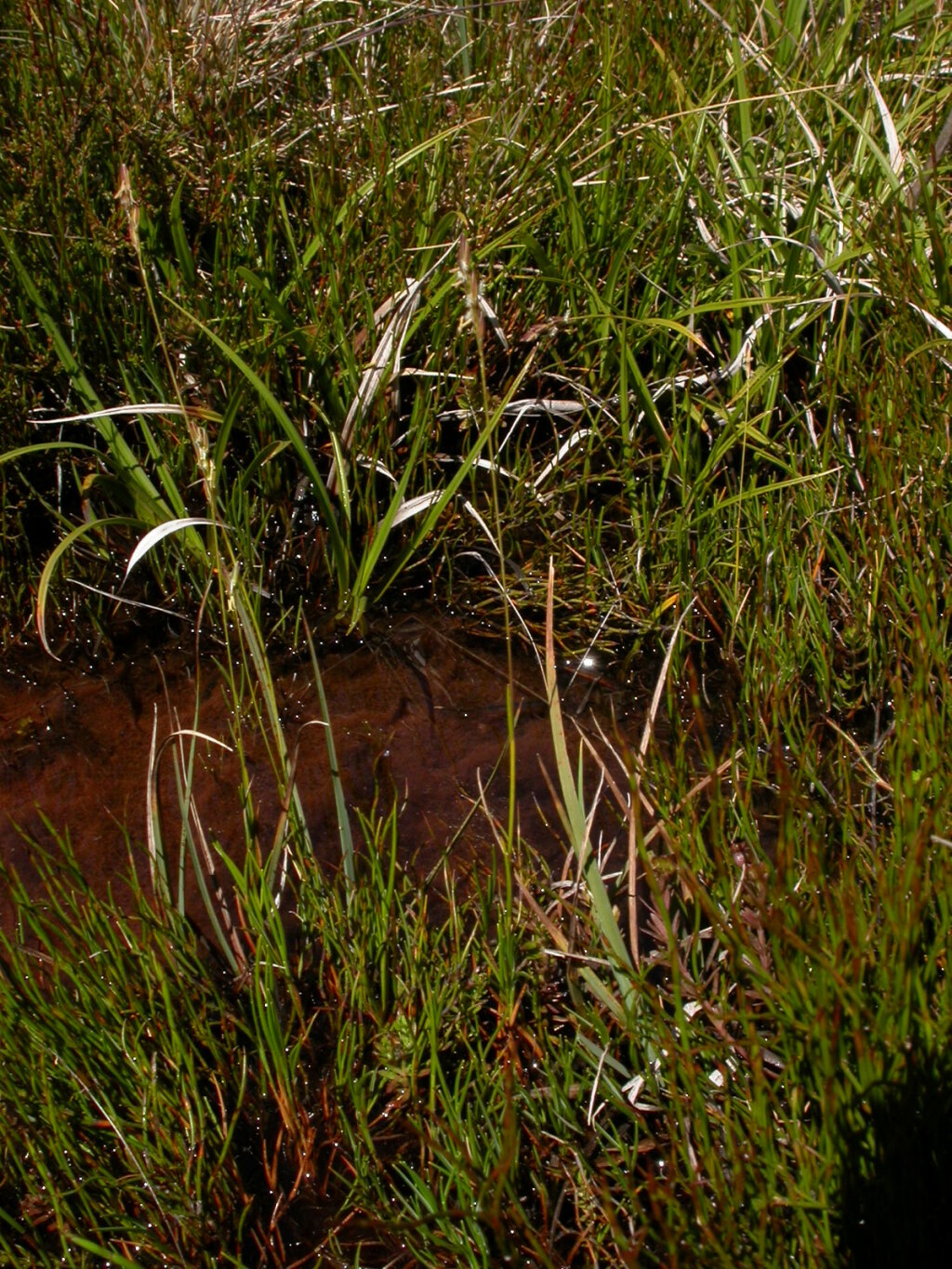Tetrarrhena turfosa
N.G.Walsh Smooth Rice-grassMat-forming, tufted or rhizomatous, ascending perennial, 0.2–1.3 m high. Leaves erect, smooth and glabrous; blade tightly involute, 2–7 cm long, 0.3–0.8 mm diam., terminating in a blunt, sometimes slightly swollen tip; ligule a ciliate rim less than 0.5 mm long, sometimes with a few marginal hairs to 1 mm long. Inflorescence an erect, spike-like raceme 1–3 cm long. Spikelets 3–10 per raceme, 4.8–6.8 mm long, subsessile, often purplish; glumes subequal, 1.1–2 mm long, smooth and glabrous; lower sterile lemma about two-thirds as long as upper, both oblong, blunt, hardly keeled, the 5–7 nerves prominently raised and scabrous; fertile lemma subequal to upper sterile lemma, dorsally keeled, uniformly scabrous, sometimes obscurely 5–7-nerved; palea about as long as lower lemma; stamens 4. Flowers mostly Nov.–Mar.
VVP, GGr, DunT, EGL, EGU, HSF, HNF, Strz, VAlp. Also NSW. Occurs in damp to wet, peaty heathlands and heathy woodlands, mostly in lowlands (Grampians,Tonimbuk; Genoa area) but with isolated occurrences in subalps (e.g. Nunniong Plateau, Mt Buffalo), often conspicuous only after disturbance (e.g. fire, mechanical clearing).
Walsh, N.G. (1994). Poaceae. In: Walsh, N.G.; Entwisle, T.J., Flora of Victoria Vol. 2, Ferns and Allied Plants, Conifers and Monocotyledons, pp. 356–627. Inkata Press, Melbourne.
 Spinning
Spinning


